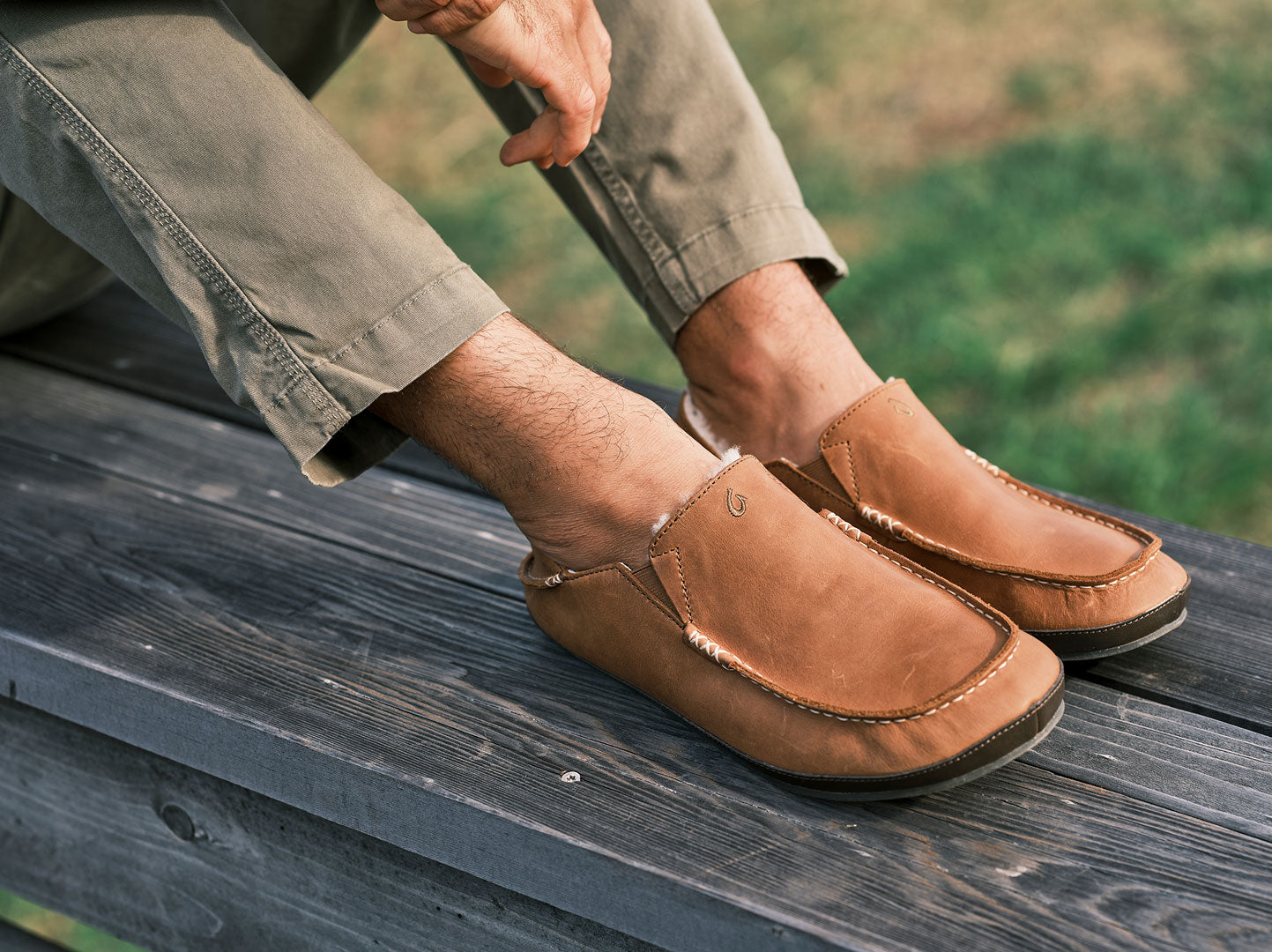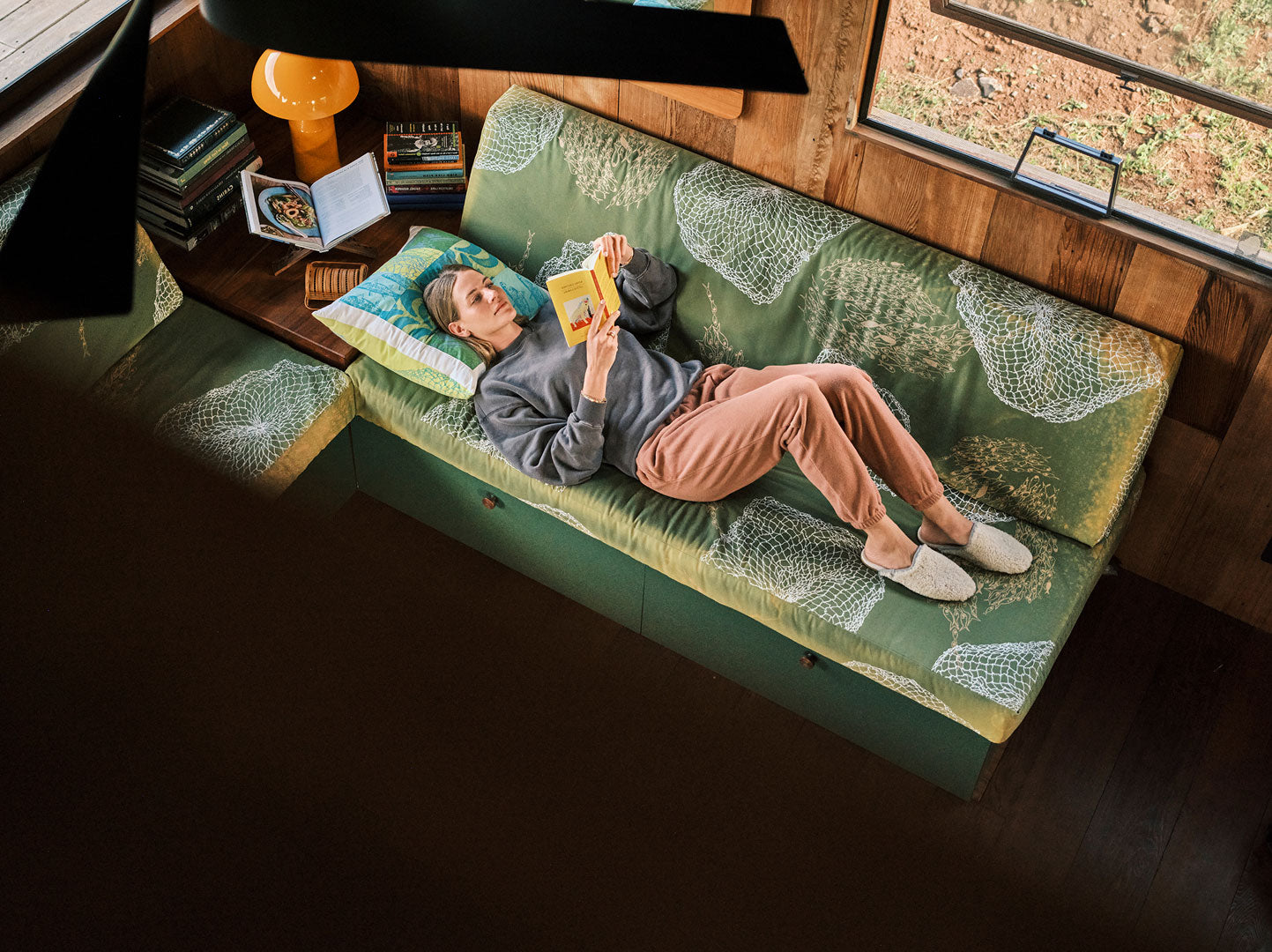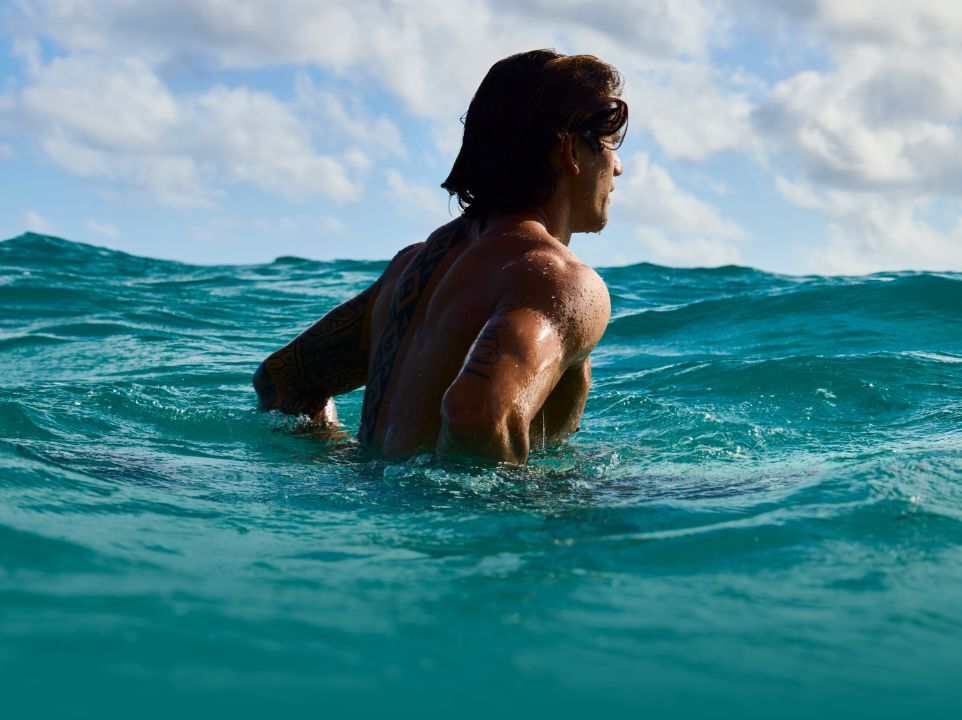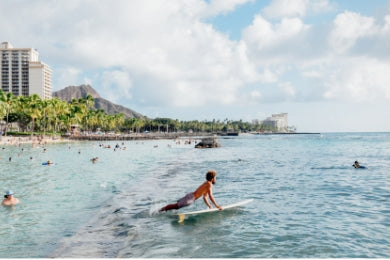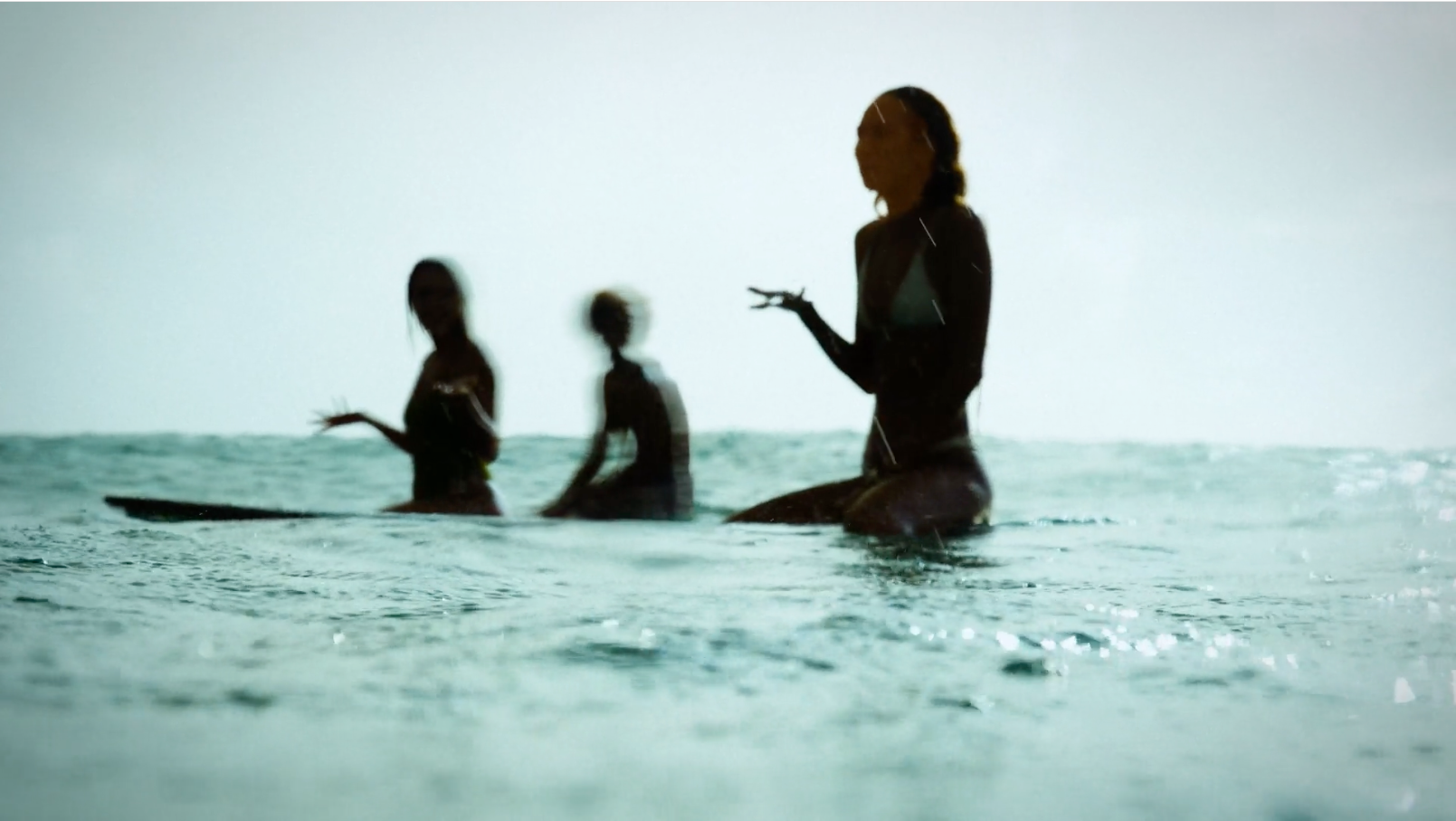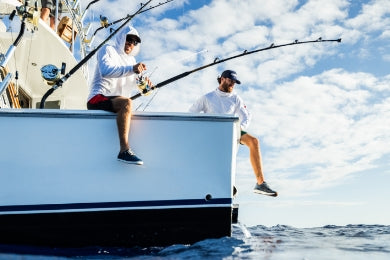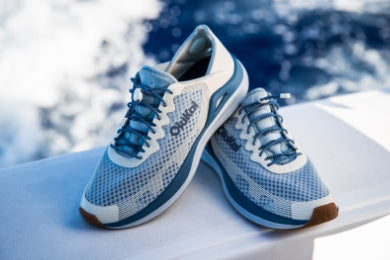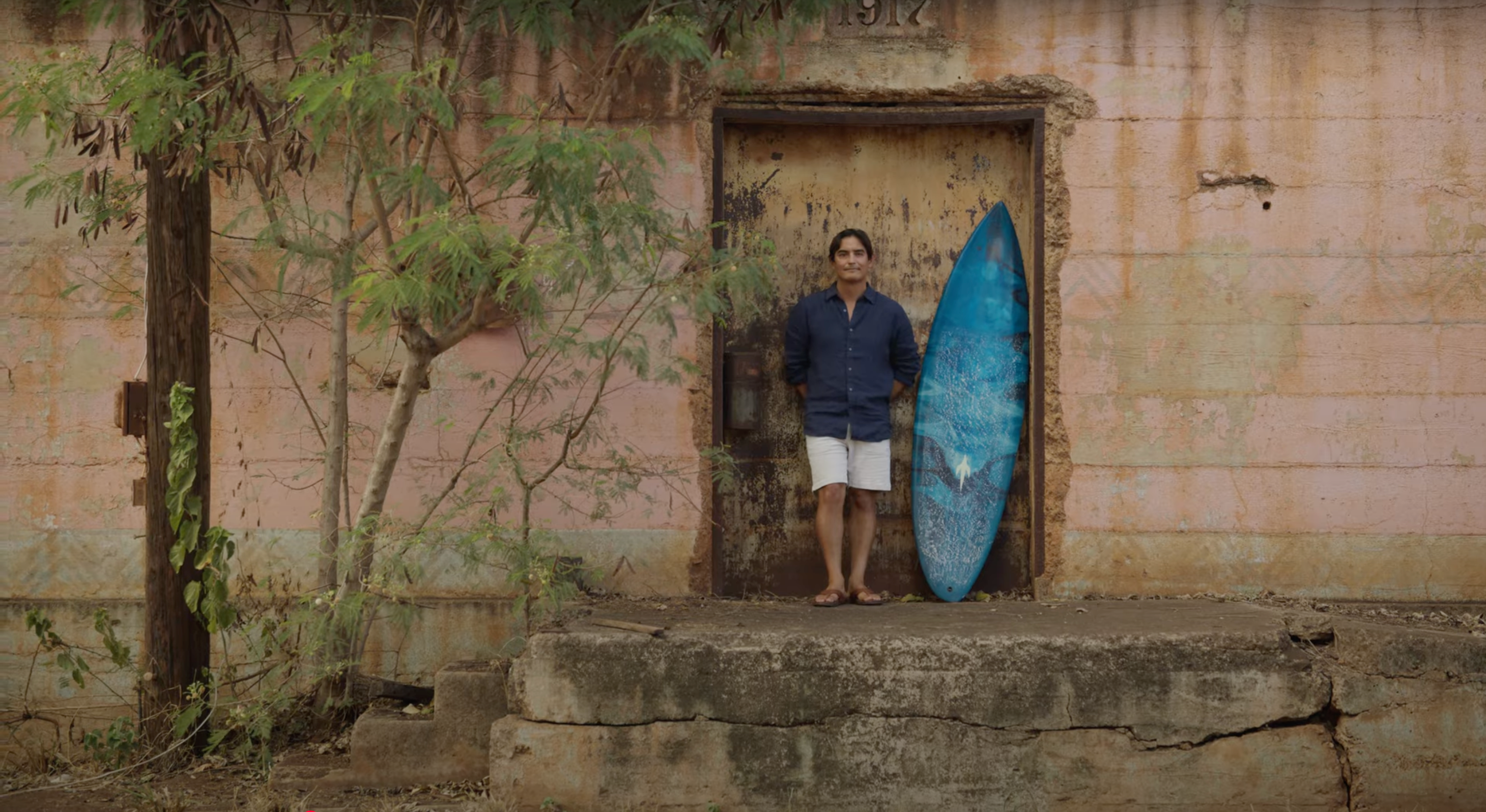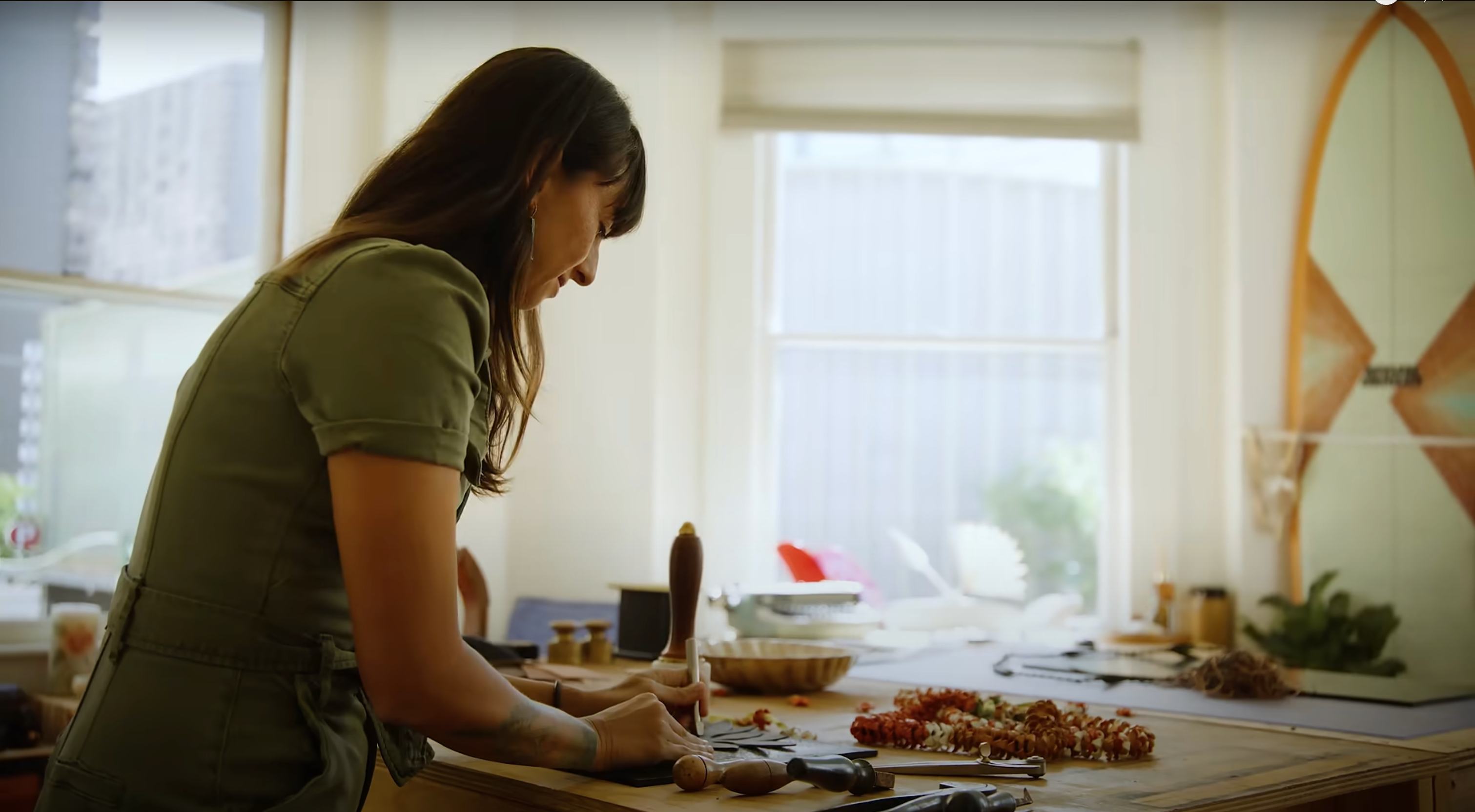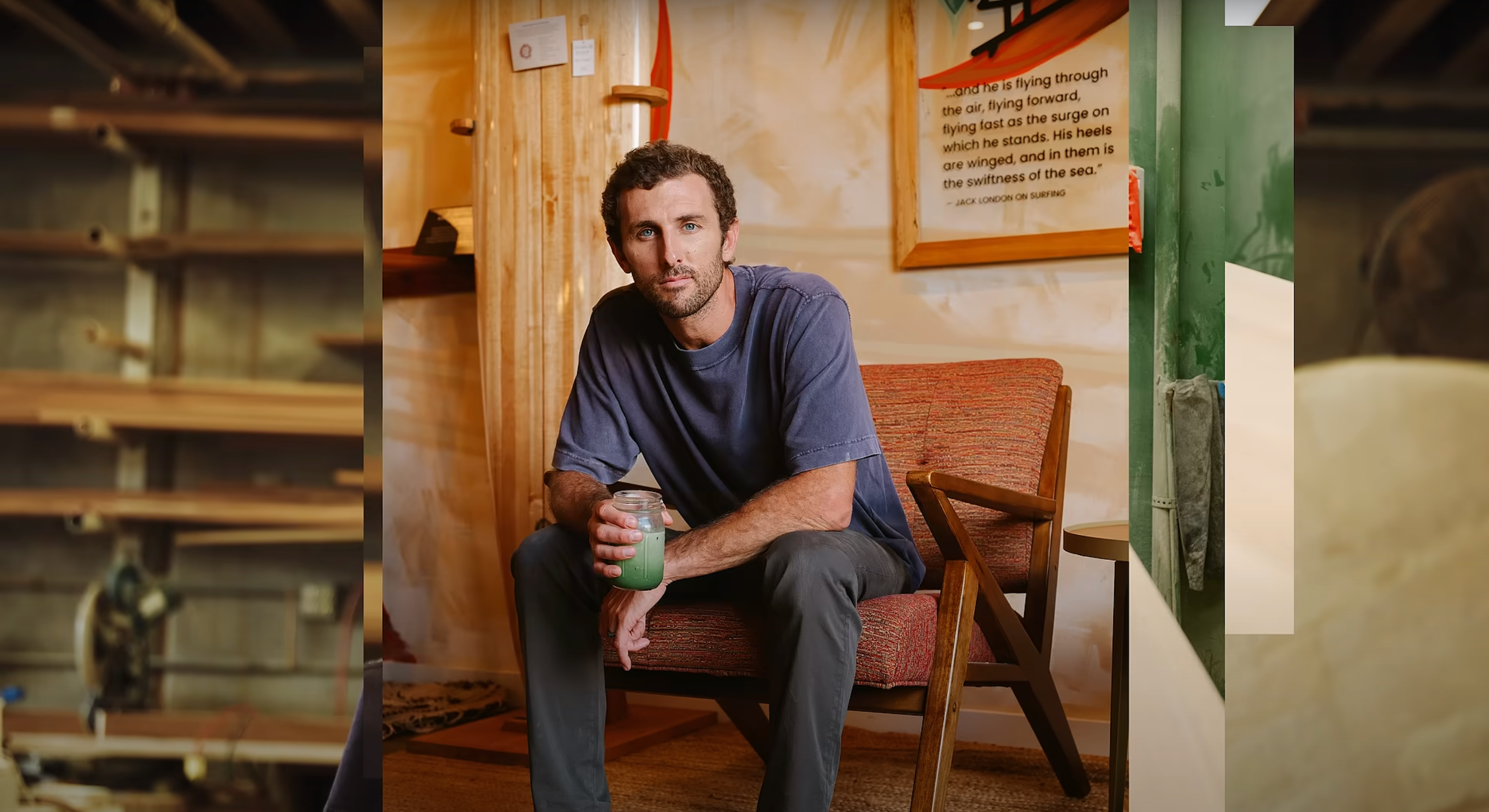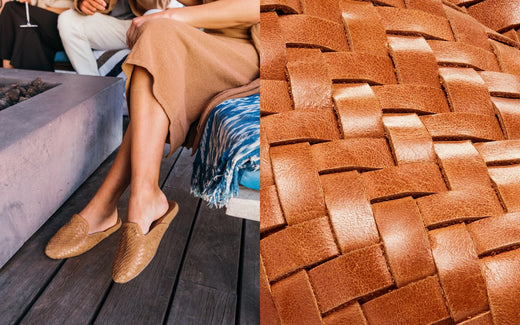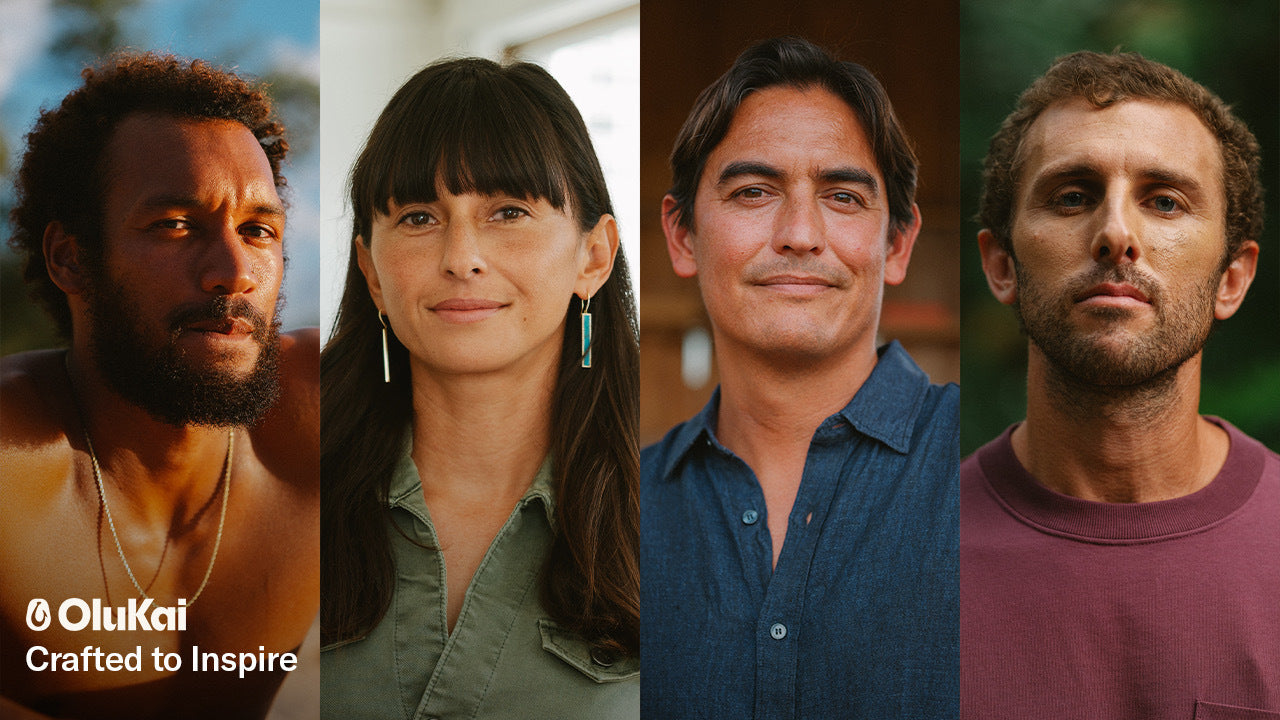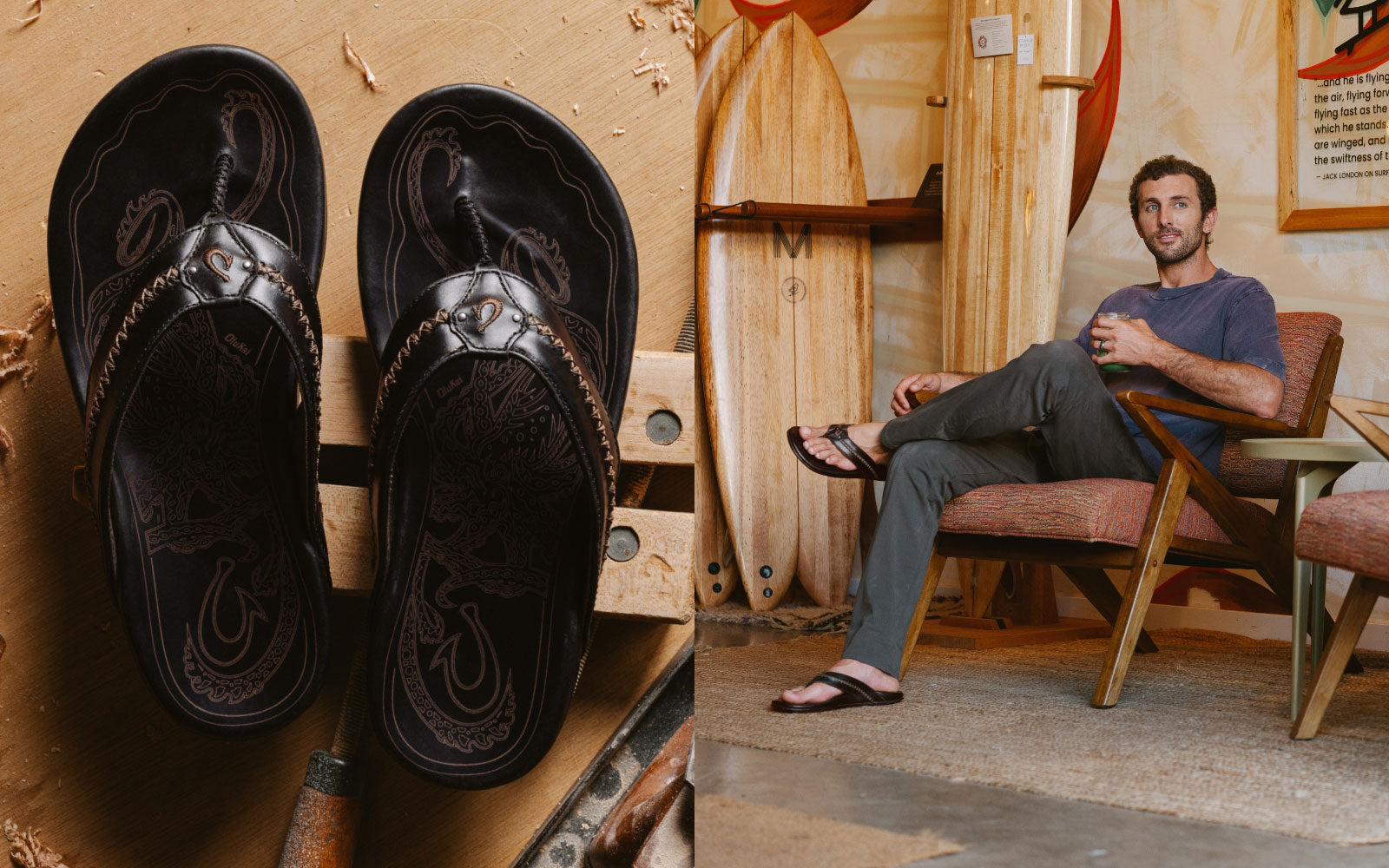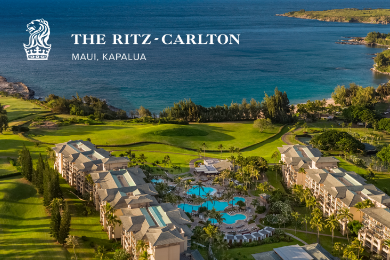Big-Wave-Surfer, Pionier der Hydrofoiler und SUP-Rennfahrer, ausgezeichneter Rettungsschwimmer, Stuntman, Wasserpolizist, Polynesien-Reisender: Der 52-jährige Archie Kalepa, der auf Maui lebt, ist einer von Hawaiʻis versiertesten Wassermenschen. Im Februar 2014 ging Kalepa nach 30 Dienstjahren als Direktor der Maui County Ocean Safety Division in den Ruhestand und übernahm eine neue Rolle als Konohiki (Hausmeister) für das OluKai-Marketingteam. Kalepas Aufgabe ist es, all seine Erfahrung, sein Wissen und seine Weisheit zu bündeln und an die Olukai-Mitarbeiter, Teammitglieder und Kunden weiterzugeben. Kalepa ist auch Mitglied der Polynesian Voyaging Society und war Besatzungsmitglied auf den hawaiianischen Reisekanus Hōkūleʻa sowie der Hawaiʻiloa - auf den Spurenseiner polynesischen Vorfahren von Tahiti nach Hawaiʻi und zurück. Die Hōkūleʻa befindet sich nun seit zwei Jahren auf einer Weltumsegelung. Die erste Etappe trug den Namen "In heimischen Gewässern", auf der die Hōkūleʻa und ihr Schwesterschiff Hikianalia die hawaiianischen Inseln, einschließlich der entlegensten Gebiete, bereisten und "über 22 000 Studenten, Pädagogen und Gemeindemitglieder in Hawaiʻi dazu brachten, sich für ihre heimischen Ökosysteme einzusetzen". Die Etappe 2014 trug den Namen Paying Homage (Huldigung) und führte von Hawaiʻi über Tahiti, Tonga und andere südpazifische Inseln nach Neuseeland. Dabei besuchte sie 24 Inseln und sechs Länder, um "ihre historischen Wurzeln und kulturellen Bindungen in anderen polynesischen Gewässern jenseits von Hawaiʻi zu würdigen." Hōkūleʻa befindet sich nun etwa auf halber Strecke der "Global Collaboration", einer dritten, 2015 langen Etappe von Neuseeland nach Namibia, über Sydney, Australien, dann entlang der Ostküste Australiens und über die Spitze, durch die Meerenge von Timor und in den Indischen Ozean, mit Zwischenstopps, "um die Notwendigkeit einer globalen Zusammenarbeit bei den Bemühungen um den Schutz der Meere hervorzuheben... und neue Freundschaften und Partnerschaften zwischen verschiedenen nicht-polynesischen Kulturen auf der ganzen Welt zu schließen..."
In late September, Archie Kalepa was at Honolulu Airport, getting ready to board a flight halfway around the world to Mauritius, a small island in the Indian Ocean, where he would board Hōkūleʻa for a leg from Mauritius to Madagascar to the east coast of Africa. Kalepa had time to talk, as he waited to board for what will be one of the greatest adventures in a life filled with them. OluKai: So you’re on board from Mauritius to Madagascar to South Africa. How much time have you spent on Hōkūleʻa up until now? Archie Kalepa: I started voyaging in 1992, and I’ve been with the canoe ever since. I’ve done actually two trips around Tahiti and then Tahiti to Hawaiʻi. OK: So you feel good on the boat, you feel comfortable, you feel safe. AK: Well I think that part of this whole journey for us, more than anything, is getting spiritually prepared. As Polynesians we feel that we are really really connected to the land. And I think that’s part of making sure that we feel good about [the trip]. That everything is pono at home. If you’re more spiritually prepared you become more mentally prepared, and you become more physically prepared. I think the other thing is the fact that a canoe is lashed together and not put together with screws and nuts and bolts. It has a tendency to what I call dance on the trough of the ocean, because everything moves and I think that is what makes the canoe so special because it has the ability to be a part of and go with the ocean. OK: The Hōkūleʻa as a Polynesian boat was evolved by the Pacific Ocean. You have taken it into foreign waters and now you are doing a treacherous crossing through the Indian Ocean. Is what you are doing here testing the canoe? AK: We’re not testing the canoe. We’re doing something that has probably happened a hundred thousand years ago. But the bigger message that we are trying to get to the people—not only of Hawaii, but the people of the world—is that things that are going on around the world. One them is global warming. You know what can we do take care of this earth. And I think Polynesians were some of the people who knew how to live in tune with the earth. They knew how to live. We want share with the rest of the world what we need to start doing individually to help make this planet a better place for all of us. What that means is re-thinking some of our industrial waste, re-thinking our environmental habits, re-thinking just what we do on a day to day basis. OK: I don’t think Hōkūleʻa visited the Maldives as they crossed the Indian Ocean—but those islands are going to be a victim. The whole island chain's going to disappear under the sea. Soon. AK: Yeah. The Maldives, the Hawaiian Islands: any atolls. They’re the first to experience these kinds of changes. The worry is, for us, about the kids. You know I have kids and I look at them and I hope and pray they get to experience life the way we did. There’s a change happening. It’s visible. And we need to do what we can, now. And that’s part of why this voyage is taking place. But for us being on this canoe gives us an opportunity to dig deep within ourselves. It helps us find ourselves as individuals but more importantly, the bigger responsibility we have to our people, to the people of Hawaiʻi, to the people of Polynesia, to the people of this earth. That’s the responsibility that we have on this canoe. That’s the way we look at our responsibility while we are on this canoe. OK: So 12 guys on a lashed-together, 62-foot Polynesian voyaging canoe. Port Saint Louis Mauritius to Taolagnaro, Madagascar is about 750 miles as the nene files, and then Taolagnaro to Maputo, Mozambique is 900 miles, and then it’s down along the east coast of Africa, which is notoriously treacherous. How many days do you think that will be? AK: You know because of the unknown—that we have never sailed through there before—I’m not going to let time dictate. Because of the increasing danger of this particular area, we are going to pay close attention to the weather. What’s happening, what’s going on, and make sure we gather precise information so we can determine if it’s good enough for us to leave. People are really doing their part to communicate and give us the weather update and have a procedure in place to follow, communication wise, so when we receive the information is current and updated and gives us enough time to [decide] whether we go or hold off. OK: Will you have local navigators and sails on the boat from that area? AK: There won’t be local people from the area. But Nainoa [Thompson ] and Kālepa Baybayanwill be on board and those are our two master navigators. Everyone on this leg has been particularly hand-picked because of the danger. And you know I am nervous. I don’t think I’ve ever been more nervous about any part of Hōkūleʻa than I am about this trip. But I am excited about what’s ahead. If you’re not nervous, you’re not prepared. The crew has never sailed there—we’ve never been to that part [of the ocean]—so there’s a lot of unknowns but it allows us to be more aware of our surroundings. OK: What is the prevailing danger from Mauritius to Madagascar to east Africa. Hurricane? AK: I think part of the danger is the cold weather. Being cold. I think rogue waves are a definite danger. The currents are very very strong. The wind will be blowing one way and the currents will be even stronger going the opposite direction. And that’s what creates the rogue waves, yeah? But Hōkūleʻa has always heeded to the weather. It has always allowed the weather to predict when we sail and when we don’t sail. For me and I think for everybody on board, safety is paramount. You know we’ve got the legacy of Eddie Aikau—he was trying to save the canoe. But on this particular leg because of those kind of past experiences, we have safety measures in place to present those kinds of things from happening. We have training for the crew members so they have a better understanding of what needs to be done and why it needs to be done. OK: Are you going to surf? AK: No we have a bigger responsibility. I just want to say that I am flying from Hawaiʻi knowing everything is okay on the home front. Whether it be job, family—making sure all of that is pono. Pono and good. It really helps clear your mind and prepare you for what’s up ahead. The Malama Honua voyage will continue on for the next two and a half years as it circumnavigates the globe. Crew members will continue to share what they can in order to help spread the message that the time to act on our planet is now. For more information on the voyage, crew, and canoes, please visit https://www.olukai.com/hokulea/.
